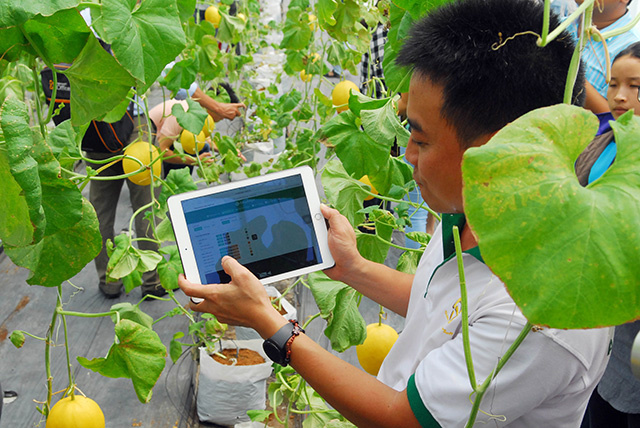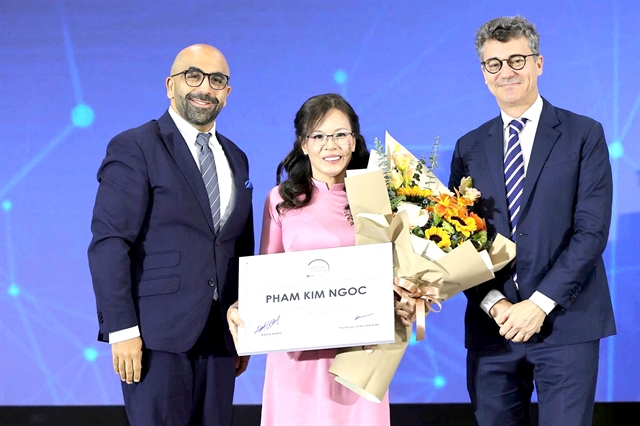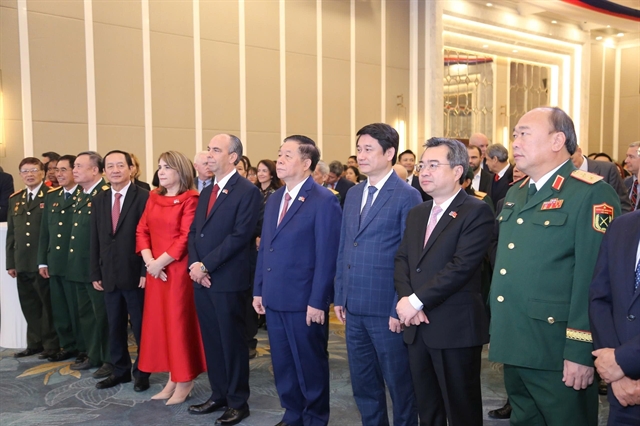 Economy
Economy

The European Union (EU) will offer Vietnamese rice exports duty-free tariff rate quotas when the EU-Việt Nam Free Trade Agreement (EVFTA) comes into effect.
 |
| The European Union (EU) will offer Vietnamese rice exports duty-free tariff rate quotas when the EU-Việt Nam Free Trade Agreement (EVFTA) comes into effect. — Photo cafef.vn |
HÀ NỘI – The European Union (EU) will offer Vietnamese rice exports duty-free tariff rate quotas when the EU-Việt Nam Free Trade Agreement (EVFTA) comes into effect.
Therefore, the rice industry has been urged to change production practices to fully take advantage of these quotas. According to the Guide to EVFTA issued by Delegation of the European Union to Việt Nam, the EU will allow the import of 80,000 tonnes of Vietnamese rice -- 30,000 tonnes of milled rice, 20,000 tonnes of husked rice and 30,000 tonnes of fragrant rice -- every year at zero per cent duty. The EU will also offer a 50 per cent duty cut at entry and then linear reduction over five years for broken rice.
Insiders said the preferential tax rate would help Vietnamese enterprises to save 17 million euros (US$20 million) in taxes each year.
Đặng Hoàng Hải, head of the industry and trade ministry’s European Market Department, said though Việt Nam had been hailed as the world’s third largest rice exporter, its rice shipments to the EU market remained modest.
He said in recent years, Vietnamese rice exports even fell because the country still focused on planting high-yield rice. Meanwhile, other countries are accelerating high-quality rice production.
The Việt Nam Food Association said rice exports to the EU market dropped from an annual average of 24,000 tonnes to 20,000 tonnes in 2014 and 18,000 tonnes in 2015. The association attributed the slump to the loss in market share of Vietnamese rice.
The EU was a demanding market with strict requirements in factors ranging from product quality to environmental standards, enterprise’s prestige and production process, Hải said.
In addition, though not being regular rice eaters, the EU customers prefer rice of higher quality than that of Vietnamese rice. That’s why Việt Nam has become less competitive against other rice exporting nations.
It was undeniable that European consumers were familiar with Thailand’s fragrant rice, while Vietnamese rice was just starting to promote its image, Hải said.
Professor Võ Tòng Xuân, a leading rice expert, said it was hard for Việt Nam to share the same rank as Thailand, but the country could learn from the experience of Cambodia, which has been emerging thanks to its rice winning the world’s ‘best rice’ title for three consecutive years.
He said if Vietnamese people insisted on growing high-yield and short-term rice varieties -- for example, varieties that can yield four to six tonnes per hectare and allow harvest after 95 days-- the production practices could not help create savoury varieties.
Therefore, to compete with its rivals, Việt Nam should speedily shift from high-yield to high-quality rice varieties, Xuân said.
According to the Ministry of Agriculture and Rural Development, the country exported 432,000 tonnes of rice for $191 million in August, bringing the total volume and value in the first eight months of this year to 3.37 million tonnes and $1.51 billion.
The figures represented decreases of 16.6 per cent in volume and 13.1 per cent in value compared with the same period last year.
Last year, rice worth $2.68 billion was exported, an almost 4 per cent fall from 2014. — VNS
VN targets $3.5b worth rice exports by 2020 HCM CITY — The Ministry of Industry and Trade has unveiled a strategy for developing rice exports in 2016-20 that targets reversing a declining trend over the last two years and increasing earnings to US$3 billion next year. It also targets a gradual shift towards export of high-quality, high-value, organic, nutritional, speciality, and Việt Nam brands of rice and rice-based products. The export of low-quality white rice is expected to fall to 15 per cent of total shipments by 2020 and 10 per cent by 2025. In the latter year medium-quality white rice will account for 20 per cent and high-quality white rice, fragrant rice, and glutinous rice for 60 per cent. The ministry will make efforts to diversify export markets, with a focus on markets with demand for high-quality rice. The ministry has sent the draft strategy to relevant ministries and industries to solicit their opinions. – VNS |


.jpg)

